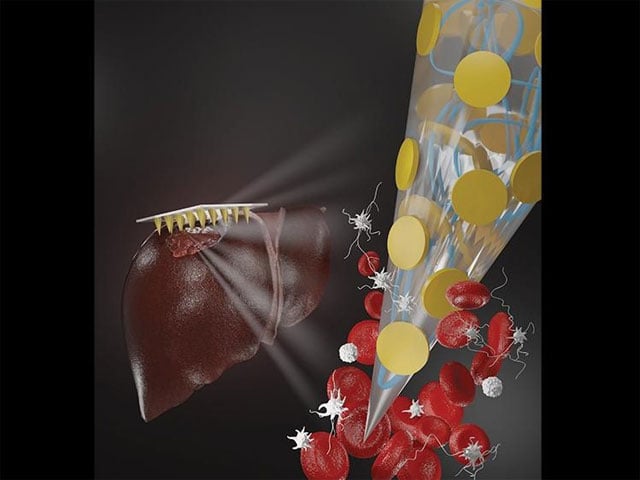American scientists have created a bandage that can immediately stop bleeding after an injury.
Amir Sheikhi, an assistant professor of chemical engineering and biomedical engineering at Penn State University in the US, and his fellow scientists presented a prototype of this strip in their new paper.
According to Professor Amir Sheikhi, frequent bleeding is a serious problem for human health. Bleeding injuries often result from excessive bleeding rather than from the injury itself. There is a need in the medical field for the use of biomaterials that can rapidly clot bleeding from an injury.
Amir Sheikhi’s hemostatic microneedle technology can be applied like traditional adhesive bandages to stop bleeding immediately. The combination of sterile and blood-soluble tiny needles on the strip increases the contact of the surface of the strip with the blood and accelerates the clotting process. These needles also enhance the adhesion properties of the skin to close the wound.
Professor Amir Shaikhi said that in a glass dish experiment, these needles reduced blood clotting time from 11.5 minutes to 1.3 minutes and reduced blood flow from a bleeding rat liver by 90 percent. These 10 minutes can be the difference between life and death.
Microneedle arrays (MNAs) are comparable to hydrogel technology currently used in hospitals to stop bleeding from wounds, but use of hydrogels requires preparation and clinical expertise. Is.
According to Amir Sheikhi, anyone can easily use this bandage with pre-made small needles to stop bleeding.
After developing the strip, the researchers are now working to bring it to market and plan to further test the technology.
(function(d, s, id){
var js, fjs = d.getElementsByTagName(s)[0];
if (d.getElementById(id)) {return;}
js = d.createElement(s); js.id = id;
js.src = “//connect.facebook.net/en_US/sdk.js#xfbml=1&version=v2.3&appId=770767426360150”;
fjs.parentNode.insertBefore(js, fjs);
}(document, ‘script’, ‘facebook-jssdk’));
(function(d, s, id) {
var js, fjs = d.getElementsByTagName(s)[0];
if (d.getElementById(id)) return;
js = d.createElement(s); js.id = id;
js.src = “//connect.facebook.net/en_GB/sdk.js#xfbml=1&version=v2.7”;
fjs.parentNode.insertBefore(js, fjs);
}(document, ‘script’, ‘facebook-jssdk’));



